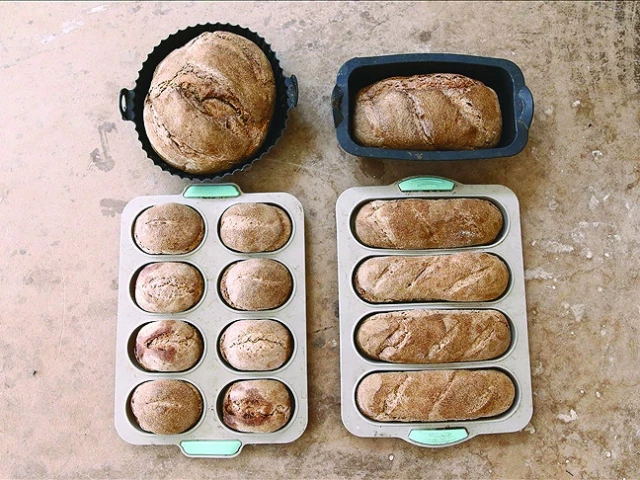Turkish women recreate ancient 3,500-year-old bread
Traditional baked item fully handmade and organic

In the Turkish province of Corum, home to the ancient Hittite capital of Hattusha, a women's cooperative has revived the 3,500-year-old "Hittite bread" mentioned in archaeological tablets, producing it organically using traditional methods.
Tuba Topkara, an agricultural engineer who moved with her family from Corum city center to Elvancelebi village a year and a half ago, has joined the 15-member Valide Sultanlar Sofrasi Women's Cooperative, which specialises in traditional baked goods. While exploring new product ideas, she learned the ancient "Hittite bread" recipe from gastronomy teacher Ulku Mensure Solak.
Topkara, who studied the 2007 book Hittite Cuisine as an Experimental Archaeology Study co-authored by Solak, decided to begin producing "Hittite bread" within the cooperative with Solak's guidance.
Taking on the role of cooperative chair, she partnered with local farmers to plant heirloom wheat seeds. She also restored an unused stone oven in the village for bread production.
Topkara carefully managed the wheat's cultivation and harvest before milling it in a traditional stone mill to produce organic flour. Cooperative members kneaded the dough, which contained organic flour, sourdough starter, rock salt, and spring water, in a wooden trough before baking it over a wood fire in a specially designed stone oven.
Prepared according to 3,500-year-old Hittite tablet recipes, the bread was first offered to the public through the Corum Municipality.
'Fully organic'
Speaking to Andalou, Topkara emphasised that the "Hittite bread" is prepared using a unique recipe and that being handmade by women adds a distinctive flavor.
She explained that heirloom wheat grown in the village is milled in a traditional stone mill to produce flour.
"We transform the flour into dough using special rock salt and our local spring water with traditional methods," she said, adding: "The bread is then baked over an oak wood fire by the women in our cooperative, packaged, and delivered to consumers."
Expressing her ambition to promote the bread globally, Topkara added: "We want to make the 3,500-year-old Hittite bread not just a symbol of Corum, but of the world. The Hittites lived in this region, and this bread is part of their legacy. We began production after conducting our own R&D studies."
Solak, co-author of the book Hittite Cuisine as an Experimental Archaeology Study, said the recipes referenced in ancient Hittite tablets, particularly in religious texts, formed the basis of their experimental archaeological research.
She highlighted the significance of staying true to ancient techniques in the bread's preparation, saying: "Hittite bread should be produced as authentically as possible, with stone mills and stone ovens." She added: "What makes it truly special is that it's fully organic."
Stressing the purity of the ingredients, she continued: "You won't find any genetically modified components in this bread. We're bringing this age-old recipe back into both Turkish and global kitchens by using the very methods once employed by the Hittites, and the outcome has been remarkable."
Highlighting the bread's 3,500-year history, Solak said: "The Hittites documented these recipes in ritual texts. We know their ingredients and methods, and by tracing these clues and using organic wheat, we have revived the ancient recipe."




















COMMENTS
Comments are moderated and generally will be posted if they are on-topic and not abusive.
For more information, please see our Comments FAQ